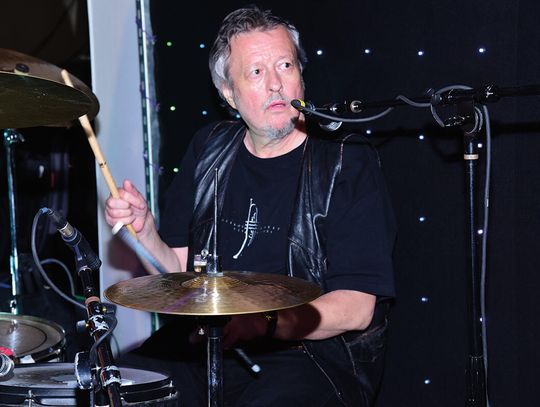Zawarte we wrześniu 2021 r. porozumienie Australii, Wielkiej Brytanii i Stanów Zjednoczonych potwierdziło, że najważniejszą metodą zapewnienia bezpieczeństwa na Indo-Pacyfiku są sojusze multilateralne. AUKUS zapoczątkował jednak nowy model współpracy, który oparty jest również na wspólnym dziedzictwie kulturowym. Kroki podjęte w tym kierunku mogą dać początek dalszej anglosaskiej kooperacji, która obejmować może również Kanadę i Nową Zelandię.
AUKUS powstał, aby ułatwić transfer brytyjskiej i amerykańskiej technologii atomowych okrętów podwodnych do Australii oraz wspomóc rozwój zaawansowanych nowych technologii, które w przyszłości mogą zyskać jeszcze większe znaczenie ze względu na wrogi charakter Chin, Rosji, Iranu i Korei Północnej.
Australia, Wielka Brytania i Stany Zjednoczone miały różne powody utworzenia tej grupy sojuszniczej. Australia szukała bliższych stosunków z Wielką Brytanią i USA, ponieważ chciała otrzymać technologię okrętów podwodnych o napędzie nuklearnym, głównie z powodu rosnącego zagrożenia ze strony Chin. Wraz z prowadzeniem przez Chińską Partię Komunistyczną agresywnej dyplomacji i szybkim rozwojem chińskiej floty morskiej, Australia postrzegała działania Chin w regionie jako zagrożenie dla jej suwerenności i prawa do samostanowienia. Z tego powodu rośnie jej zwrot do Stanów Zjednoczonych i szerokiej koalicji państw Wolnego Świata.
Analizując potencjał militarny Chińskiej Armii Ludowo-Wyzwoleńczej, jasne jest, że Chińczycy posiadają jedną z największych armii świata, w tym największą obecnie marynarkę wojenną. Jak zauważyli Australijczycy, to właśnie flota morska odgrywa największą rolę w prowadzeniu działań militarnych w tym regionie. Jednak sam potencjał morski państw sojuszniczych może nie stanowić miażdżącej przewagi nad Chinami, co równa się z brakiem odpowiedniej funkcji prewencyjnej w regionie.
Wynika to z kalkulacji International Institute for Strategic Studies, które wskazują, że chińska marynarka wojenna dysponuje obecnie ponad 530 okrętami bojowymi. Kontrastując tę liczbę z 480 okrętami marynarki wojennej USA, 74 okrętami Królewskiej Marynarki Wojennej Wielkiej Brytanii i 44 kadłubami w szeregach Królewskiej Marynarki Wojennej Australii, można zrozumieć, iż w obliczu dynamicznego rozwoju chińskiej floty morskiej, kolektywna siła morska AUKUS daje jedynie nieznaczną przewagę na wodach Pacyfiku (530 vs 598). Z tego powodu szukać należy dalszych sojuszy w kierunku ugruntowania anglosaskiej koalicji w tym regionie.
Jednym ze sposobów na zwiększenie bezpieczeństwa i stabilizacji tego regionu jest szersze zaangażowanie sojusznicze pozostałych państw koalicji antychińskiej, które również podzielają anglosaskie konotacje – Kanady i Nowej Zelandii. Kanada dysponuje obecnie 64 okrętami bojowymi, natomiast Nowa Zelandia posiada w swojej flocie 11 okrętów. Zaangażowanie tych dwóch państw, przy osobnej aktywności Stanów Zjednoczonych w tym regionie i działaniach w ramach AUKUS, dałoby start nowemu sojuszowi, który od kilku lat pozostaje w sferze dywagacji polityków Kanady, Nowej Zelandii, Australii i Wielkiej Brytanii – CANZUK. Pomysł powołania takiej koalicji jest lobbowany przez grupę CANZUK International i w dużej mierze wspierany przez brytyjskich konserwatystów. Inni zwolennicy to think tanki, takie jak Adam Smith Institute, Henry Jackson Society, Bruges Group i czołowi politycy ze wszystkich czterech krajów.
„Czas być odważnym. Kanada powinna zaproponować umowę CANZUK, aby zacieśnić więzi z naszymi tradycyjnymi przyjaciółmi – Wielką Brytanią, Australią i Nową Zelandią” – powiedział Erin O’Toole, kanadyjski parlamentarzysta reprezentujący Konserwatywną Partię Kanady.
„Jeśli możemy zrobić coś lepszego z Australią, Kanadą i Nową Zelandią, z pewnością powinniśmy. Mamy bardzo, bardzo podobne zainteresowania i unikalny zestaw wartości” – dodał, mówiąc o perspektywie rozwoju CANZUK, premier Wielkiej Brytanii Boris Johnson.
Połączone siły anglosaskiego sojuszu AUKUS z Królewskimi Marynarkami Kanady i Nowej Zelandii zbudowałyby trwałą przeciwwagę dla rosnącej potęgi Chińskiej Republiki Ludowej i aktywności dyplomatycznej komunistycznych Chin w regionie Wysp Salomona.
Połączenie sojuszników zrzeszonych w AUKUS z potencjalnym rozszerzeniem porozumienia państw w ramach CANZUK walnie przyczyniłoby się do zabezpieczenia regionu południowego Pacyfiku. Według ogólnodostępnych źródeł, chińska flota morska liczy obecnie około 300 tysięcy członków personelu wojskowego. W kontrze do tej liczby, państwa zrzeszone w sojuszu AUKUS dysponują łącznie ponad 399 tysiącami wojskowych w czynnej służbie na morzu. Dodając do tej liczby potencjał personelu Królewskiej Marynarki Wojennej Kanady i Nowej Zelandii (8 300 Kanada i 2050 Nowa Zelandia), państwa potencjalnej anglosaskiej koalicji antychińskiej na Indo-Pacyfiku liczyłyby na niemal 410 tysięcy aktywnie służących żołnierzy. To około 110 tysięcy więcej, niż liczy obecnie Marynarka Wojenna Chińskiej Armii Ludowo-Wyzwoleńczej.
Po drugiej stronie, na północy Oceanu Spokojnego, widać wzmożoną aktywność pozostałych państw sojuszniczych Stanów Zjednoczonych – Japonii i Korei Południowej – jako odpowiedź na działalność Chin w regionie Morza Południowochińskiego. Aktywność wzmaga się wraz ze zbliżającym się szczytem państw QUAD, który zaplanowany jest na 24 maja 2022 roku w Tokio. To właśnie tam zapadnie wiele wiążących decyzji, które na celu będą miały proliferację tzw. Pax Americana w tym miejscu na Ziemi.
Jan Hernik
absolwent Ośrodka Studiów Amerykańskich Uniwersytetu Warszawskiego. Specjalizuje się w teorii wpływu religii, rasy i pochodzenia etnicznego na wybór polityczny w amerykańskich wyborach prezydenckich. Jego zainteresowania badawcze obejmują także aktywność USA w regionie Indo-Pacyfiku.
Niniejszy artykuł powstał w ramach działalności społeczno-misyjnej polskiego think tanku Warsaw Institute. Jeśli cenicie Państwo przygotowane przez naszych ekspertów treści, apelujemy o wsparcie finansowe naszej działalności realizowanej na zasadzie non-profit. Do regularnych darczyńców przysyłamy bezpłatnie anglojęzyczny kwartalnik The Warsaw Institute Review.Więcej informacji: www.warsawinstitute.org/support/Darowizny można dokonać bezpośrednio na konta bankowe:USD: PL 82 1020 4900 0000 8502 3060 4017EUR: PL 85 1020 4900 0000 8902 3063 7814GBP: PL 18 1020 4900 0000 8302 3069 6641PLN : PL 41 1020 1097 0000 7202 0268 6152SWIFT: BPKOPLPWDziękujemy!
Warsaw Institute to polski think tank zajmujący się geopolityką. Główne obszary badawcze to stosunki międzynarodowe, bezpieczeństwo energetyczne oraz obronność. Warsaw Institute wspiera Inicjatywę Trójmorza oraz stosunki transatlantyckie.
Warsaw Institute is a Polish think tank focusing on geopolitics. The main research areas are international relations, energy security and defense. The Warsaw Institute supports the Three Seas Initiative and transatlantic relations.
AUKUS as a prelude to the expansion of the Anglo-Saxon counteroffensive in the Indo-Pacific?
The agreement concluded in September 2021 by Australia, Great Britain and the United States confirmed that the most important method of ensuring security in the Indo-Pacific are multilateral alliances. AUKUS, however, initiated a new model of cooperation, which is also based on a shared cultural heritage. Steps taken in this direction may give rise to further Anglo-Saxon cooperation that may also include Canada and New Zealand.
AUKUS was created to facilitate the transfer of British and American nuclear submarine technology to Australia and to support the development of advanced new technologies that may become even more important in the future due to the hostile nature of China, Russia, Iran and North Korea.
Australia, Great Britain, and the United States had different reasons for creating this allied group. Australia was looking for closer ties with the UK and the US as it wanted nuclear powered submarine technology, largely due to the growing threat from China. With the Chinese Communist Party’s aggressive diplomacy and the rapid expansion of the Chinese navy, Australia saw China’s actions in the region as a threat to its sovereignty and right to self-determination. For this reason, its turn to the United States and the broad coalition of Free World states is growing.
When analyzing the military potential of the People’s Liberation Army of China, it is clear that the Chinese have one of the largest armies in the world, including the largest navy today. As the Australians noted, it is the sea fleet that plays the greatest role in conducting military operations in this region. For this reason, the Scott Morrison government introduced Australia to AUKUS, but the maritime potential of allied countries alone may not constitute an overwhelming advantage over China, which equates to the lack of an appropriate preventive function in the region.
This is due to the calculations of the International Institute for Strategic Studies, which indicate that the Chinese navy currently has more than 530 combat ships. Contrasting this number with 480 US Navy ships, 74 Royal Navy ships of Great Britain and 44 hulls in the ranks of the Royal Australian Navy, it can be understood that in the face of the dynamic development of the Chinese sea fleet, the collective naval power of AUKUS gives only a slight advantage in the waters of the Pacific (530 vs 598). For this reason, further alliances should be sought to consolidate the Anglo-Saxon coalition in this region.
One of the ways to increase the security and stabilization of the region is the broader allied involvement of the remaining countries of the anti-Chinese coalition, which also share the Anglo-Saxon connotations of Canada and New Zealand. Canada currently has 64 combat ships at its disposal, while New Zealand has 11 ships in its fleet. The involvement of these two countries, with the United States’ separate activity in this region and activities within the AUKUS framework, would give rise to a new alliance that has been in the sphere of discussion for several years by politicians from Canada, New Zealand, Australia and Great Britain – CANZUK. The idea of creating such a coalition is lobbied by the CANZUK International group and largely supported by British conservatives. Other supporters include think tanks such as the Adam Smith Institute, Henry Jackson Society, Bruges Group, and leading politicians from all of the four countries.
“It’s time to be bold. Canada should propose a CANZUK deal to bring closer ties with our traditional friends – the UK, Australia and New Zeland” – said Erin O’Toole, a Canadian MP representing the Conservative Party of Canada.
“If we can do something better with Australia, Canada and New Zealand, we certainly should. We share very, very similar interests and a uniquely shared set of values” – added, speaking about the development perspective of CANZUK, British Prime Minister Boris Johnson.
The combined forces of the Anglo-Saxon alliance AUKUS with the Royal Navy of Canada and New Zealand would build a lasting counterbalance to the growing power of the People’s Republic of China and the diplomatic activity of Communist China in the Solomon Islands region.
The merger of the AUKUS allies with the potential extension of the agreement of states within CANZUK would be instrumental in securing the South Pacific region.
According to publicly available sources, the Chinese navy currently numbers around 300,000 military personnel. Contrary to this number, the AUKUS countries have a total of over 399,000 soldiers in active service at sea.
Adding to this number the personnel potential of the Royal Canadian and New Zealand Navy (8,300 Canada and 2050 New Zealand), the countries of the potential Anglo-Saxon anti-Chinese coalition in the Indo-Pacific would count almost 410,000 actively serving soldiers. This is about 110,000 more than the current Navy of the People’s Liberation Army of China.
On the other side, in the north of the Pacific Ocean, we can see the increased activity of the remaining US allies – Japan and South Korea, as a response to China’s activities in the South China Sea region. Activity increases with the upcoming QUAD summit, which is scheduled for May 24, 2022 in Tokyo. It is there that many binding decisions will be made aimed at the proliferation of the so-called Pax Americana in this place on Earth.
Jan Hernik
a graduate of the American Studies Center at the University of Warsaw. He specializes in the theory of religion, race and ethnicity for political choice in the U.S presidential elections. His research interests also include US activity in the Indo-Pacific region.











